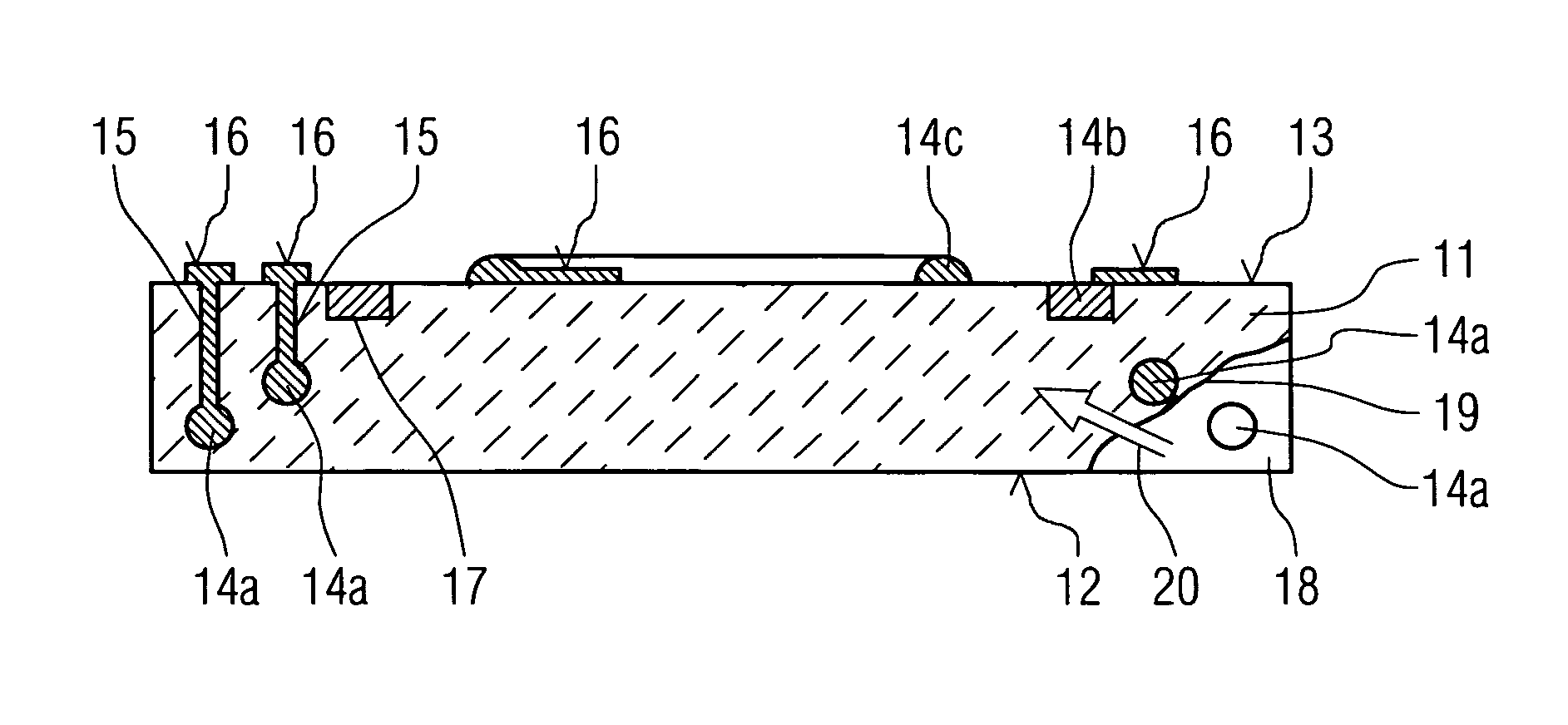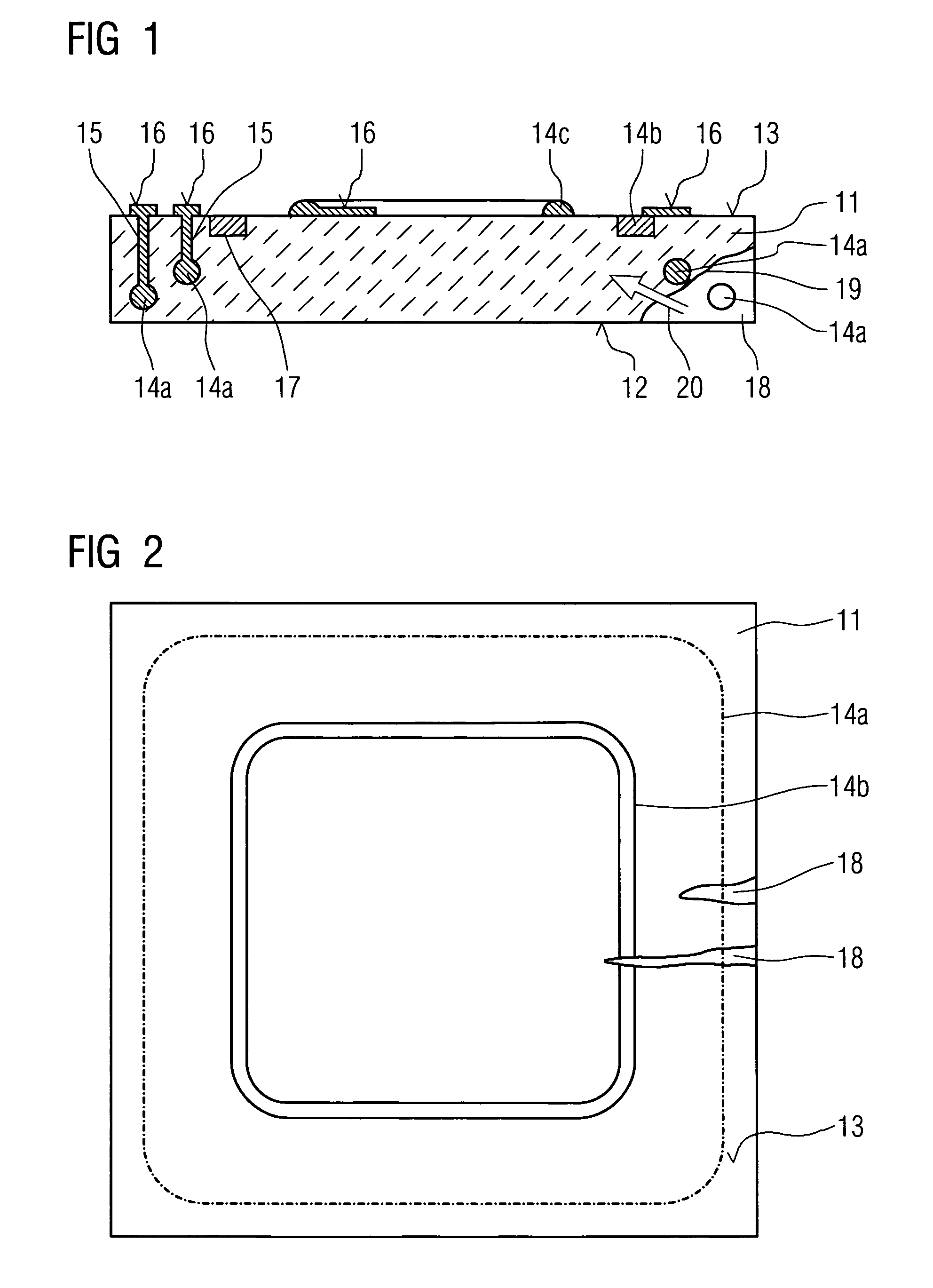Component with a detection structure for mechanical damage
a detection structure and component technology, applied in the field of components, can solve problems such as significant changes in the electrical properties of electrical conductors, and achieve the effect of easy verification
- Summary
- Abstract
- Description
- Claims
- Application Information
AI Technical Summary
Benefits of technology
Problems solved by technology
Method used
Image
Examples
Embodiment Construction
[0024]A component 11, as shown in FIG. 1, is implemented as a heat shield panel e.g. for a gas turbine combustion chamber. This component has a front side 12 facing into the combustion chamber, this side being most heavily subjected to the thermal stress produced by the combustion process, and a back side 13 by which it can be fixed to the wall (not shown in greater detail) of the combustion chamber. The component 11 is made of ceramic. Placed inside the component are electrical conductors 14a which can run in a loop (not visible in the illustration in FIG. 1). These conductors 14a have electrical connections 15 to the back side 13 of the component 11 which are electrically contactable via contact surfaces 16. Accommodated in a groove 17 is another conductor 14b which likewise forms a loop (not shown in greater detail) on the back side 13. There is also implemented on the component surface formed by the back side 13 a raised conductor 14c which likewise runs in a loop. The conductor...
PUM
| Property | Measurement | Unit |
|---|---|---|
| electrically insulating | aaaaa | aaaaa |
| electrical properties | aaaaa | aaaaa |
| thermal expansion | aaaaa | aaaaa |
Abstract
Description
Claims
Application Information
 Login to View More
Login to View More - R&D
- Intellectual Property
- Life Sciences
- Materials
- Tech Scout
- Unparalleled Data Quality
- Higher Quality Content
- 60% Fewer Hallucinations
Browse by: Latest US Patents, China's latest patents, Technical Efficacy Thesaurus, Application Domain, Technology Topic, Popular Technical Reports.
© 2025 PatSnap. All rights reserved.Legal|Privacy policy|Modern Slavery Act Transparency Statement|Sitemap|About US| Contact US: help@patsnap.com



